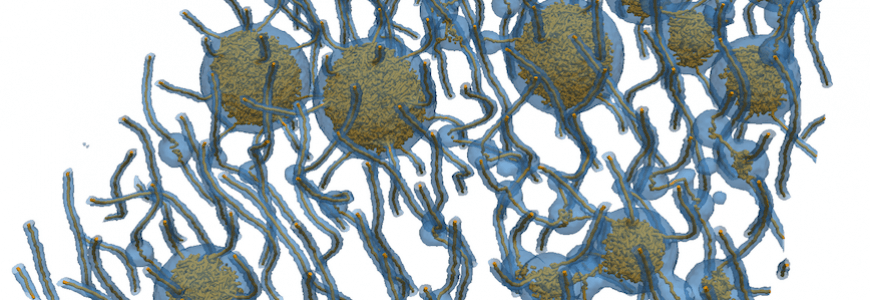By Rob Mitchum // April 4, 2016
Superconductors have made advanced technologies such as MRI machines, superconducting generators, and particle accelerators possible in our modern world. Soon, they may make futuristic concepts such as magnetic levitation trains and cheap wind energy more affordable and widespread. But in order to do so, scientists need to realize more of the theoretical potential of superconductivity to pass electric current with zero resistance. That means better design of superconductors — a challenge that a team led by Computation Institute and Argonne scientists have taken on using computational simulation.
This joint team is studying a new computational approach to improve and accelerate the testing of new superconductor designs. Taking inspiration from the “materials-by-design” framework at the core of the Materials Genome Initiative, they developed what they call “critical-current-by-design” — simulation software to test different conformations of superconductors virtually before conducting experimental studies.
In a new paper for Advanced Materials, Ivan Sadovskyy, a staff researcher at the CI and Argonne, and colleagues applied this new approach to studying the role of small defects in altering the maximum current passed by a superconductor. In the presence of a magnetic field, superconductors create vortices that dissipate the current it carries. Counter-intuitively, defects in the superconductor material can actually offset this effect by “pinning” vortices, preventing their motion and their current-limiting effects.
However, there are many different types of defects, each possible in a variety of sizes, shapes, and patterns. For instance, a manufacturer may add self-assembling nanoparticles or a chemical treatment to form a pattern of oval shapes, or irradiate the material to produce columnar structures. The multitude of options creates more combinations than would be possible to study in the laboratory.
“This is a pretty complicated problem,” Sadovskyy said. “To do this experimentally and describe all parameters, that’s nearly impossible, but using simulations, that is possible.”
The new simulation code tackles the challenging mathematics of superconductor vortex motion and pinning in three dimensions. Representing the influence of various defects on the superconductor critical current presents even more complexity, as their effect is non-additive — doubling the number of defects does not simply double the current passed, Sadovskyy said. But after a year of development, the team could successfully run simulations on supercomputers such as Titan at Oak Ridge National Laboratory, currently the second most-powerful supercomputer in the world.
With the software, scientists can test different materials, defects, and designs without having to actually manufacture them.
“Usually, such an experiment will take from 3 months to half a year,” Sadovskyy said. “We can now simulate it in a day.”
In the Advanced Materials paper, the researchers largely confirm the experimental results with the simulation as a proof of concept for critical-current-by-design. Going forward, they will reverse that flow, looking for the optimal arrangement, shape, and size of defects to inspire real-world experiments and design. One method they’ll use is an evolutionary approach, where random designs will compete for highest critical current until the “fittest” combination of parameters wins out.
Such work will hopefully shorten the road to more efficient, lighter, and less expensive superconductors, which would provide a boost to technologies ranging from the Large Hadron Collider to windmill farms. By boosting the power of commercial superconductors, the technologies of tomorrow may be even closer.
The computational work was performed as part of the Scientific Discovery through Advanced Computing (SciDAC) partnership Optimizing superconductor transport properties through large-scale simulation (OSCon) lead by Argonne scientist Andreas Glatz funded by the U.S. Department of Energy, Office of Science, Advanced Scientific Computing Research and Basic Energy Science. The team collaborated with experimentalists from the Superconductivity and Magnetism group at the Materials Science Division at Argonne National Laboratory, lead by Wai Kwok, and the Center for Emergent Superconductivity, an Energy Frontier Research Center, funded by the U.S. Department of Energy, Office of Science, Office of Basic Energy Sciences.

